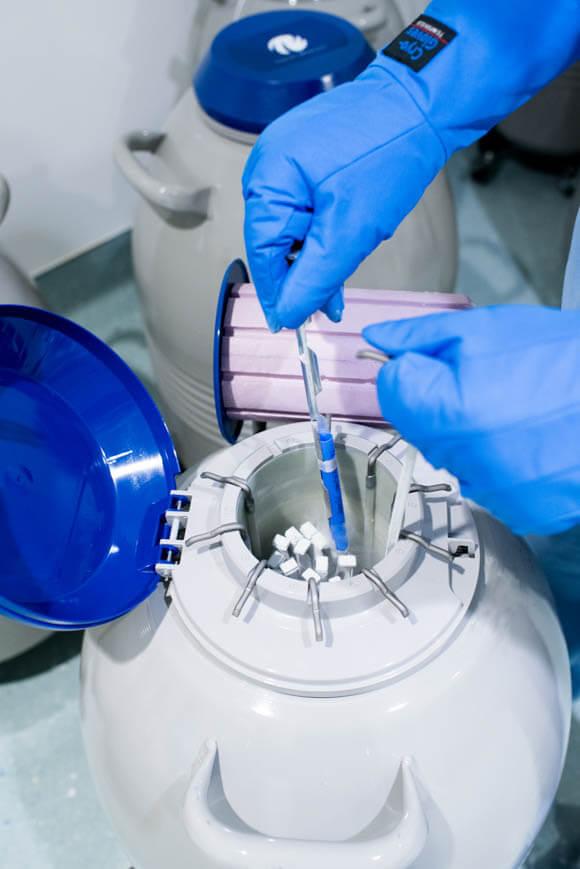- All review

Vitrification is an ultrafast method of freezing embryos with the help of which water is not converted into ice crystals that can injure the embryo, but into a gel state. As a result of vitrification, 95% of the embryos survive.
This is the fundamental difference between vitrification and slow freezing, in which the frozen intracellular fluid necessarily passes through the crystallization phase and, thus, embryos worse experience slower freezing.
In what cases do doctors recommend embryos freezing? Does this often happen?
Firstly, the preserved embryos allow spouses to significantly save money in the second attempt (treatment cycle) spent on stimulant drugs. But almost half of the cost of the IVF procedure is modern expensive drugs to stimulate ovulation.
Of course, good quality embryos are selected for long-term storage. Vitrificated embryos are stored in liquid nitrogen at a temperature of -196 C in special containers. With an adequate regime of cryobank maintenance, the storage period of embryos can be calculated for years.
Pregnancy rate as a result of cryoprotocols: not lower (and sometimes higher) than in fresh cycles.
